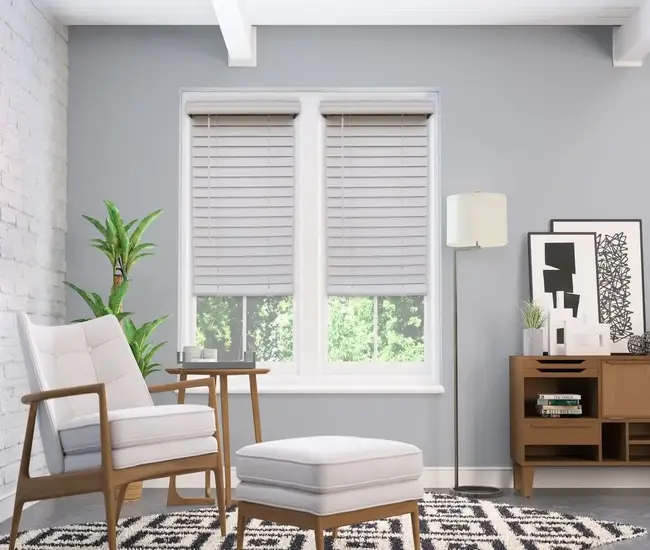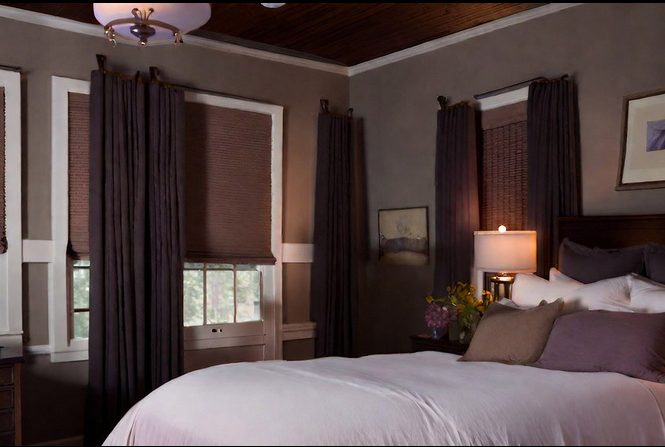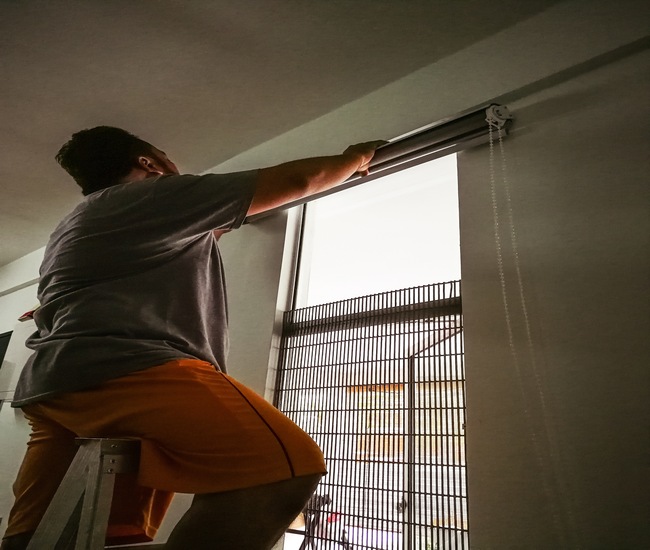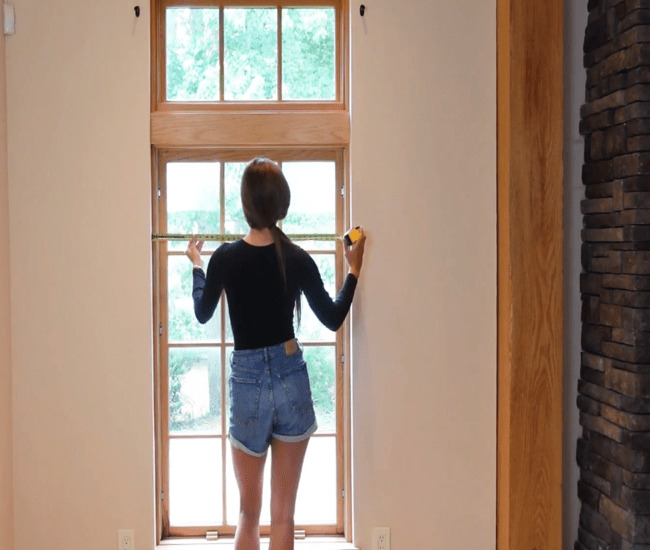Selecting between blinds made of real wood and faux wood for your home in 2025? Consider look, price, style, durability, and moisture-resistance. This post explores respective advantages and disadvantages and gives expert insights into the comparative analysis and pros and cons to help you make the perfect choice for your home’s decor and practical needs.
Faux wood blinds are a popular choice for homeowners on a tight budget, while people with wooden furniture and other wooden articles in their room’s interior would prefer real wood blinds.
When it comes to choosing the right window treatments for your home, there are a lot of options to choose from. But two of the most popular choices for homeowners are wood blinds and faux wood blinds. So, what’s the difference between the two? And which one is better for your home?
Read on to find out everything you need to know about real wood blinds vs faux wood blinds so that you can make the right choice for your home.
Things in a Nutshell
- Material – natural vs synthetic – is the main difference between real and faux wood blinds. Faux wood blinds are made from a composite material.
- Real wood blinds are more expensive window coverings than faux wood blinds, but they offer more durability and a pure natural look.
- Faux or synthetic wood blinds are more budget-friendly and they offer more versatility in terms of colors, styles, sizes, and finishes.
- Both wood blinds and faux wood blinds have their own benefits and drawbacks. A better option for your home will depend on your personal preferences and needs.
Similarities between Real & Faux Wood Blinds – A Comparative Analysis

- Durability: Both real and faux wood blinds are quite durable.
- Cleaning: Each type can be cleaned easily with a simple wipe of a duster or a soft cloth.
- Look: Both real and food wood blinds may look alike.
- Slat Structure: Each type has a similar slat structure.
- Treating Odd-Shaped Windows: Both can be used as specialty window treatments.
- Enhancing Aesthetic: Both genuine and faux wood blinds would enhance the overall aesthetic of a room.
Real vs Faux Wood Blinds: Key Difference
Material
Wood blinds and faux wood blinds are two popular types of window treatments. But what’s the difference between them? Wood blinds are made from real wood, while faux wood blinds are made from a synthetic material.
Cost

Faux wood blinds are a more budget-friendly option, but they’re not as durable and may warp or crack over time. When it comes to appearance, real wood blinds have a more natural, organic texture, while faux wood blinds have a more polished appearance.
Pros and Cons of Real Wood Blinds
Real wood blinds for windows both have their advantages and disadvantages. Here’re their pros and cons:
Pros
- Higher Aesthetic Worth: Real wood blinds have a warm, natural look that can add character and elegance to any room in your home.
- Pure Rustic Beauty: Genuine wood blinds are preferred for adding pure rustic touch to your home’s interior, bringing nature indoors.
- Natural Warmth & Coziness: With faux wood blinds installed on your windows, you can add natural warmth and coziness to your room’s interior.
- High-quality Material: Natural wood is a durable and long-lasting material that can withstand wear and tear.
- Natural Insulator: Wood is a natural insulator, so wooden blinds or shades can help regulate the temperature in a room.
- Customizability: Wood blinds come in a range of sizes, styles, and colors that can match any interior décor of your home.
Cons
- Cost: Real wood blinds tend to be more expensive than their faux wood counterparts.
Cost
- Maintenance: Wood blinds require more maintenance than faux wood blinds since they are susceptible to warping and cracking from moisture and humidity.
Faux Wood Blinds Pros and Cons
Pros
- More Affordable: Faux wood blinds are a more affordable choice than real wood blinds. You can easily get 2 or 3 faux wood blinds for the price of a single real wood blind.
- Easier to Clean & Maintain: Faux wood blinds are easy to clean and maintain, and they are less likely to warp or crack than real wood blinds when exposed to water droplets.
Cleaning
- Better Moisture Resistant: Faux wood blinds are not affected by humidity and moisture, making them an ideal window treatment for high-humidity areas like bathrooms and kitchens.
- Better Fit for Bay Windows: Faux wood blinds are a better choice for bay or odd-shaped windows.
Cons
- Aesthetics: Faux wood blinds for homes may not offer the same natural warmth and character as real wood blinds.
- Limited Customization: Faux wood blinds for homes are available in fewer color and texture options than real wood blinds.
How to Choose Between Real & Faux Wood Blinds for Your Home
When it comes to choosing between real and faux wood window treatments for your home, there are a few factors to consider:
Function – Light Filtering, Room Darkening, or Total Blackout?

First, consider the function of the window treatment. Are you looking for something to block out light, reduce noise or add privacy. With flexible slats, faux wood blinds ensure better fit, darkening your room and creating complete privacy in your room.
Here are some alternatives to real and faux wood blinds to consider. If you’re looking for something to block out 100% light, blackout curtains or shades are a good option. For softly filtered light plus privacy, choose light filtering sheer shades.
Want to reduce noise? Lined curtains or heavy drapes can help. And if you’re looking for privacy, window film or blinds are a good choice.
Style
Once you’ve determined the function of the window treatment, think about style. Do you want something that’s subtle and understated or something that makes a strong statement? Faux wood blinds typically offer more style options to match and enhance any decor at an affordable cost.
If you have a more traditional home, richly textured real wood window treatments might be more appropriate.
Are you on Budget?
You can achieve a natural wood-like appearance with faux wood blinds, while also getting better durability and moisture resistance.
Keep these things in mind when choosing window treatments for your home and you’ll be sure to find something that both looks and works great.
Installing Wood Blinds and Faux Wood Blinds

The process for installing real and faux wood blinds is generally the same. However, due to the weight of the real wood material, their installation may require additional support, such as adding extra mounting brackets or using sturdier mounting hardware.
Here is a step-by-step installation process for wood blinds and faux wood blinds:
- Measure the window frame size (width and height) and determine the placement of the mounting brackets.

- Attach the mounting brackets to the window frame or the wall around it.
- Insert the headrail of the window blinds into the brackets and secure it in place with the help of screws.
- Install the tilt wand, lift cord, or any other lift mechanism.
- Attach the valance to the headrail to conceal it for the sake of curb appeal.
Buying Guide for Faux Wood Blinds
Conclusion
Summing up, wood blinds have a classic, elegant look and high durability, but they come at a higher cost and require more maintenance. On the other hand, faux wood blinds are a more cost-effective and low-maintenance window treatment option, but they may not have the same natural warmth and character as real wood blinds.
Overall, both wood blinds and faux wood blinds offer benefits that make them good choices for window treatments. However, faux wood blinds tend to be the better choice for most homeowners due to their durability, affordability, better moisture-resistance, ease of cleaning, and variety of style options.
FAQs
What is better, real wood or faux wood blinds?
If you are looking for a truly refined appearance, real wood blinds are an ideal option. Blinds made from high quality hardwood will provide high aesthetic value and optimal light control. On the other hand, if you need window treatments that combine beauty with durability and work well in high moisture areas, consider faux wood blinds. Faux wood blinds are a great choice for the rooms where the blinds could get wet, such as bathrooms, kitchens, and laundry rooms.
What are the disadvantages of faux wood blinds?
- Faux wood blinds can be expensive.
- Require regular maintenance.
- Susceptible to damage due to high moisture and humidity.
What is the life expectancy of faux wood blinds?
How long do faux wood blinds last? The lifespan of readymade 2” faux wood blinds ranges between 2 to 5 years. If the wood veneer is of poor quality, your blinds will start to peel or acquire damage, requiring replacement sooner. However, custom faux wood blinds, made from high quality artificial wood, tend to last 3 to 7 years. If you want your blinds to last 8 to 10 years, we highly recommend real wood blinds.
Are faux wood blinds any good?
- Faux wood blinds work perfectly with bay windows.
- They give a shutter look without the cost.
- Faux wood blinds are strong and durable window treatments and come in a range of colors and sizes.
Are wood or faux wood blinds more expensive?
Wood blinds are typically more expensive (due to the cost of the real wood) than their faux wood counterparts. While a genuine wood blind would cost over $100 for a 24” w x 36” h window, you can easily get a 2” faux wood blind for less than $50 for the same-sized window.
Need More Help?
Still unable to decide between faux wood and wood blinds for your home? Get in touch for free expert advice! Use 24/7 live chat or give us a call at (800) 863-6109 to contact our experts for durable, high-quality window treatment solutions.
